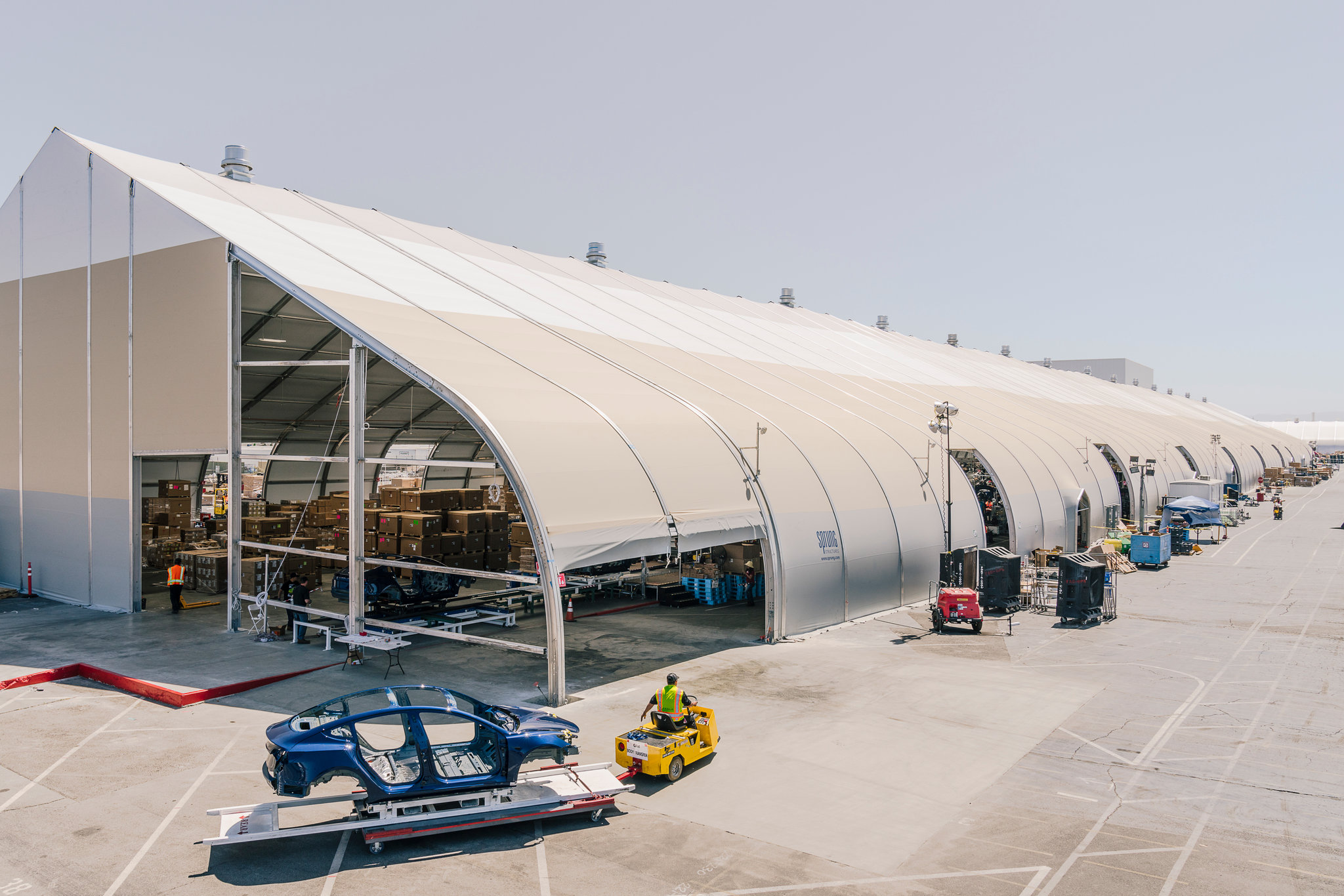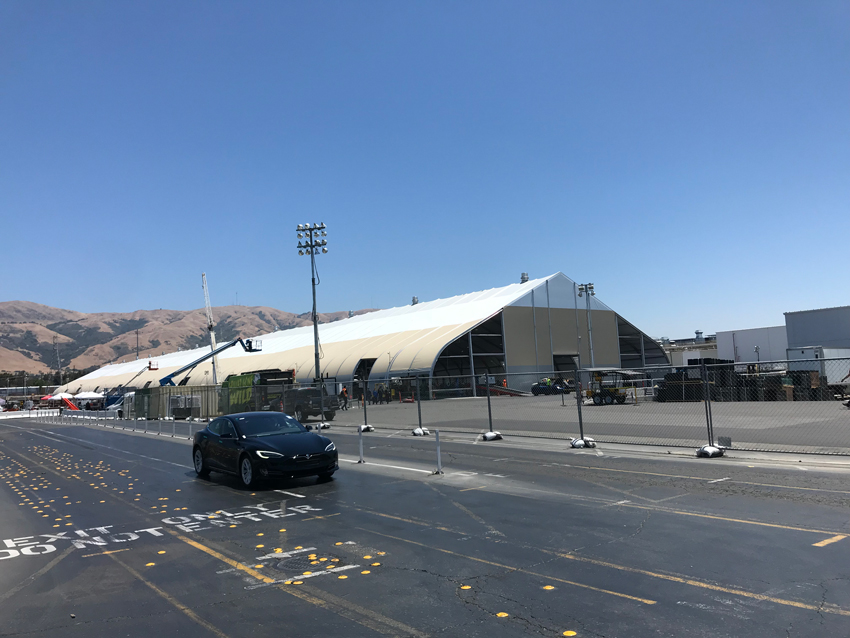Revolutionary, Permanent Tensioned Membrane Aluminum Frame Supported Structures
Learning Objectives:
- Describe the architect’s role in managing the installation of rapidly constructed tensioned membrane aluminum frame supported structures.
- List performance standards, including improved daylight, acoustic, and fire-safety measures, engineered into these high- performance buildings to enhance the physical environment and provide emotional and social well-being to occupants.
- Identify strict code-compliance regulations for these buildings that benefit the physical environment through increased energy efficiency and recyclability.
- Discuss project management and design of these buildings from pre-design to post-occupant evaluations that allow for a wide range of configurations, including multistory interiors, various surface colors, and massing alternatives.
Credits:
This course is approved as a Structured Course
This course can be self-reported to the AANB, as per their CE Guidelines
Approved for structured learning
Approved for Core Learning
This course can be self-reported to the NLAA
Course may qualify for Learning Hours with NWTAA
Course eligible for OAA Learning Hours
This course is approved as a core course
This course can be self-reported for Learning Units to the Architectural Institute of British Columbia
Fast tracking, value engineering, sustainability, and integrative design are driving the delivery of most 21st century buildings. These initiatives are supported and encouraged by architects and owners racing toward ever-tightening project-delivery schedules, budgets, and energy-efficient mandates.
It takes a remarkable structure to meet the goals of a remarkable company. When constructing their headquarters in Kent, Washington, Blue Origin opted for a solution that incorporates energy efficiency, sustainability, and speed: a tensioned membrane aluminum supported structure.
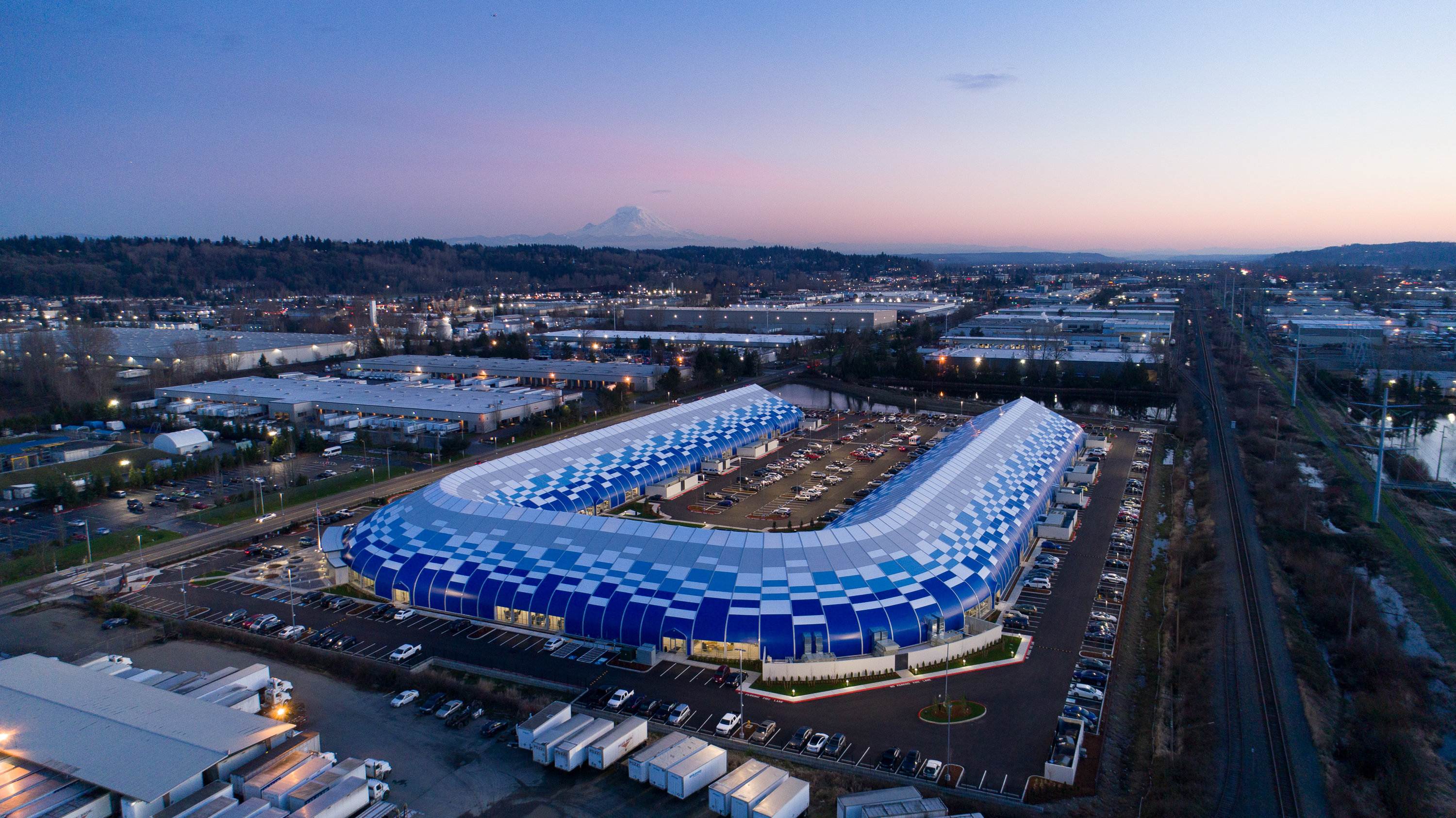
Photo courtesy of Sprung Structures, Inc.
The 270,000-square foot head office for Blue Origin in Kent, Washington, erected from ground breaking to completion in just eleven months.
Design teams often confront owners with a “devil’s bargain.” There is too often a trade-off between two of three choices: cost, schedule or quality. Design and technological advances in tensioned membrane aluminum frame supported structures may provide an alternative for owners and architects who want it all. TESLA to SpaceX, Harvard to Blue Origin, homeless navigation centers to ice arenas, clients are choosing to fast-forward into the 21st century with sustainable buildings that deliver on cost, quality, and schedule without sacrificing permanence and beauty.
A high-performance tensioned membrane aluminum frame supported structure is eco-friendly, and components exceed building codes and some of the most stringent green rating system criteria. These structures provide the same functionality of a traditional building type at a much lower cost and much faster construction time. The tensioned membrane exterior, which is also the interior surface of the building, provides a high-performance insulated airtight barrier for protection in any climate. The interior membrane is the interior wall surface requiring no additional drywall, plaster, painting, or resurfacing, as it is part of a complete building package. As with many new models for building financing, these buildings can be leased. In fact, many manufacturing companies start by leasing these structures to assist with cash flow and end up purchasing them at a later date.
Many design professionals are not aware of this new building type, particularly as a permanent building system rather than a temporary alternative. According to Sprung Structures Vice President Jim Avery, “One of the most common misconceptions is that tensioned membrane aluminum frame supported structures are tents and only considered as a temporary construction solution. Quality starts with the intelligent design of these buildings. Considering the rapid construction time, superior energy efficiency, long-term flexibility, and lower overall costs, tensioned membrane aluminum frame supported structures perform as well or better than other traditional building types.”
The following guidelines and case studies will provide more detail as to how to select tensioned membrane aluminum frame supported structures as a permanent solution to complex programming requirements. From visioning and programming to post-occupancy, design professionals are finding these structures an unconventional solution for new 21st century problems.
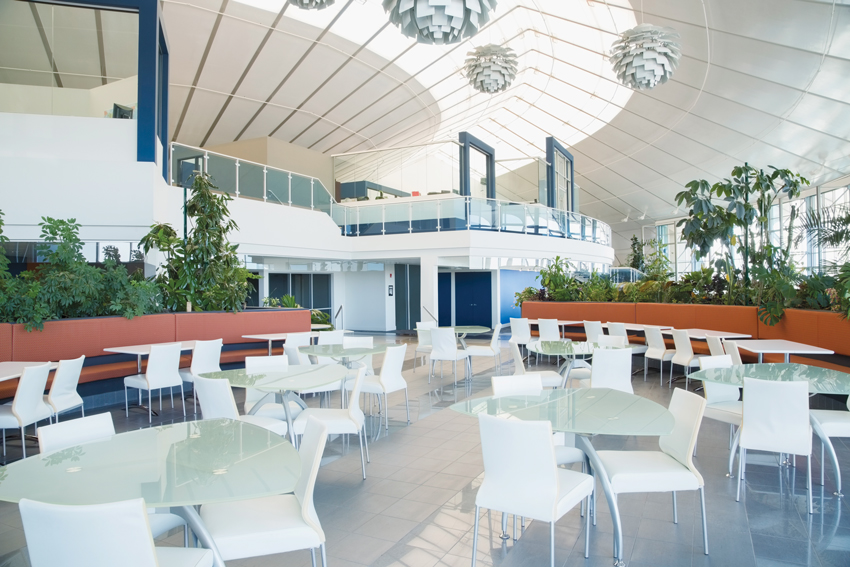
Photo courtesy of Sprung Structures, Inc.
This membrane manufacturer’s permanent headquarters makes employees feel as though they’re working in a large botanical conservatory with high-end atmospheric and environmental controls. Translucent daylight panels allow for reflected light throughout the building without the use of electricity.
Project Management
According to the American Institute of Architects (AIA), project management is vital for the success of every project. As with any project the, selection of a pre-engineered building such as a tensioned membrane aluminum frame supported structure requires careful planning. The architect articulates client goals, creates a vision, and analyzes planning and code requirements before developing construction documents. Any successful project begins by listening and developing strong communications between all members of the team. A tensioned membrane aluminum frame supported structure is engineered from the baseplate forward, which means incorporating the manufacturer as a key team player.
This building type is similar to that of a modular construction system. According to the AIA, “An increasing number of building projects across several markets are using modular construction, the process by which components of a building are prefabricated off-site in a controlled setting and then shipped to the project site and assembled. This approach allows projects to capture the efficiencies gained by integrating the processes and technologies of design, manufacturing, and construction—without having to compromise on aesthetic intent. According to research conducted by McGraw-Hill Construction, when implemented effectively, this approach has been shown to result in a higher-quality building, delivered in a shorter time frame, with more predictable costs and fewer environmental impacts—for example, through reduced material use and waste.”1
Aesthetically, design modifications can include changes in shape, color, building orientation, entry components, daylight strategies, and interiors. All of these are driven by the architect’s vision. Early discussions with municipal planners will pave the way for those communities unfamiliar with the permanence of these structures. One of the key differences in the project delivery of these structures is how quickly they can be assembled. The rapid construction of a revolutionary manufacturing plant in 19 days is a demonstration of how quickly a building can be raised. Coordination of the building envelope with machinery, equipment, and even elaborate interiors is key to successful project delivery.
Blue Origin and New Life Christian Academy, highlighted later in this course, are examples of buildings with multistory mezzanine interiors. By code, a membrane structure, no matter how tall, is classified as a single-story structure. Other examples that follow demonstrate projects that meet LEED Silver criteria and are reused over a period of 25 years in three different locations and for homeless shelters. Some of these projects are located on existing parking lots, while others are on more traditional foundations. They are designed to adapt to all climate challenges. In all of the following examples, the tensioned membrane aluminum frame supported structure provides numerous economic and environmental advantages while exceeding client expectations.
Mission Complete at Blue Origin
It takes a remarkable structure to meet the goals of a remarkable company. When looking to construct their headquarters in Kent, Washington, Blue Origin explored conventional building options but could not wait the estimated two to three years it would take for their structure to be completed. Realizing a traditional construction route was not going to meet the company’s needs, Blue Origin opted for a much faster solution that incorporates energy efficiency, sustainability, and the highest of quality: a tensioned membrane aluminum supported structure by Sprung.
Built in just 11 months, the high-tech facility is visually striking both inside and out, with vibrant colors, acoustically insulated partition walls, and seemingly endless amounts of space for employees to work, gather and collaborate. Featuring ample natural light and amenities that include a garden, fitness facilities, an auditorium and more than 100 conference rooms of varying sizes, the structure was completed on time and on budget, and it now serves as an ideal setting for inspiration and innovation. At a time that requires the reimagining of the construction industry around the world, the demand for a faster, more flexible, cost-effective building solution to adapt to changing needs and emerging markets is more important than ever before.
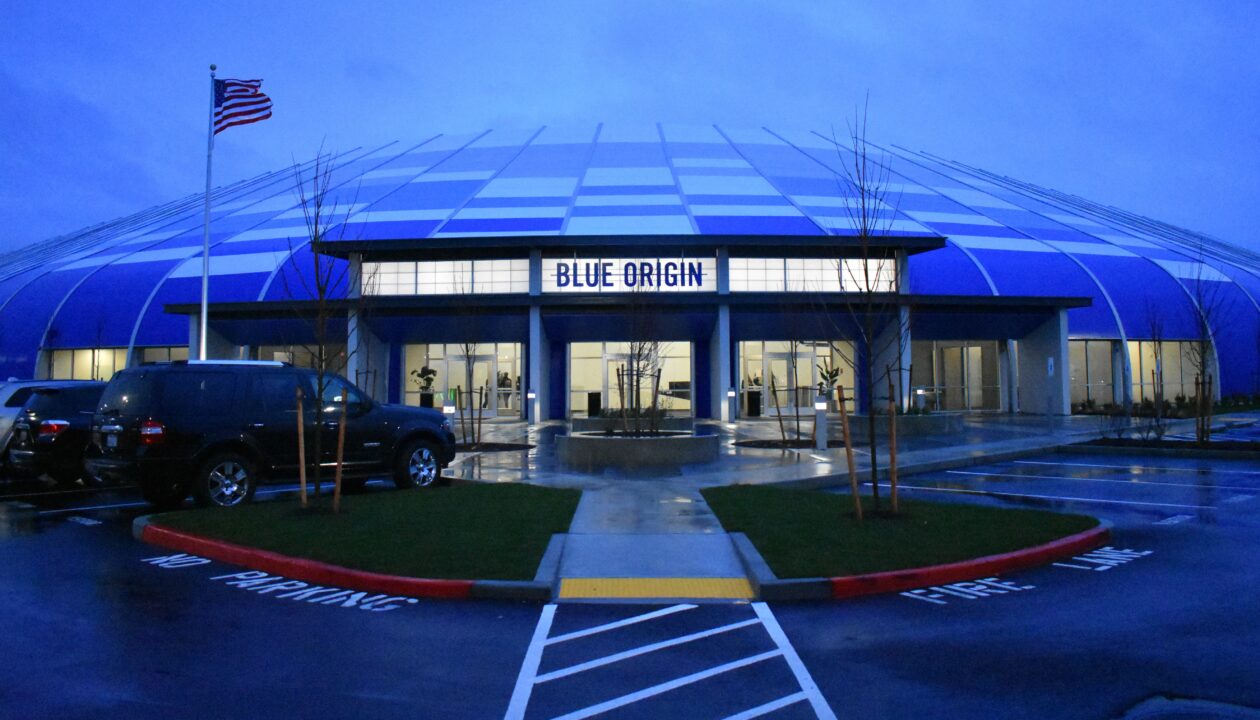
Photo courtesy of Sprung Structures, Inc.













